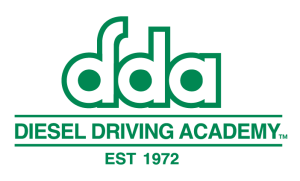Trip planning may just be the trucker’s best friend. Planning out your route involves more than simply which roads to take; you also have to take into account when and where to stop to eat, refuel, and rest.
This is more than simply out of necessity for the hungry, tired driver. It’s a regulation, a government-mandated requirement that must be done at given intervals according to the rules governing hours of service, the trucking company, and it must be tracked by the electronic logbook.
Beyond that, poor trip planning can have all sorts of nasty and undesirable consequences. Of course, you can run out of fuel, or fuel at the wrong time (leading to issues with your vehicle weight and negatively affecting your schedule), or end up in a strange or even dangerous place. These things can end up costing you valuable time and money (keeping in mind, for example, that there can be a price difference of up to 10 cents per gallon between states, so be mindful of stopping where fuel prices are cheaper). Remember the inefficiency is the enemy of the truck driver.
As you begin planning your route, consider a few things:
- Are you tied to your assigned route, or can you seek faster routes? Sometimes carriers insist you keep to their routes, while some encourage you to seek out faster routes. However, take caution about finding “shortcuts.” Often they end up more trouble than they’re worth.
- Don’t use 55 mph as your benchmark for travel, even if most of your miles are logged on the freeway. In fact, a blog posted at Smart Trucking suggests calculating trips at 38 mph, which often allows you to integrate stops into your trips. “If stopping for bathroom breaks, eating, fueling, border time crossing, traffic, [and] weather are taken into consideration, you’ll find it fairly accurate,” the blog states.
Beginning the Plan: the Route
First, gather your tools. In the age of cell phones, GPS, truck routing software, and online resources that can help you plot out truck stops, rest areas, groceries and services, route planning is easier than ever. However, don’t discount the value of a good atlas; make sure you have one for reference.
Consult your GPS software and plot out your stops carefully, considering when you will need to stop to refuel, eat, and rest as mandated by regulations.
Before you leave, be sure you have items like food, emergency supplies and extra clothes in the truck in case you break down in a remote area. Packing for an emergency is essential, especially in the winter, when your supplies can be life-saving.
Know where you can stop along the way throughout your trip. Take note of the truck stops, restaurants, department and grocery stores, and rest stops, and always know how far you away you are from one as you drive.
Finally, always leave yourself plenty of time, which means allowing more time than you think you will need. Under promise, over deliver. Give yourself plenty of time in case you run into weather or traffic delays.
Sticking to the Route
It’s important to try to stay as close to the route as possible. Again, giving yourself additional time to account for traffic delays, small breakdowns, or other issues that can crop up is paramount. Getting a little ahead of schedule is great, both for the possibility of arriving to your destination early and to account for slowdowns down the road.
And for crying out loud, don’t be your own worst enemy. Delaying yourself by savoring that cup of coffee, showering, or oversleeping will only hurt you in the long run. You will have enough external issues trying to delay you on the road; don’t make things more difficult on yourself.
It’s important always to know where you are going. You don’t want to find yourself stuck in severe weather, or lost in a bad neighborhood at night, or having to stop to rest on the side of the interstate. Becoming stranded in a winter storm, for instance, can be deadly. Again, always having emergency supplies on hand can save your life.
Overall, good trip planning can mean the difference between success and failure on a single run. Good planning can mean arriving on time, but hitting the road blind can end with you arriving late, or worse yet, not at all. Do yourself a favor; plan ahead.
